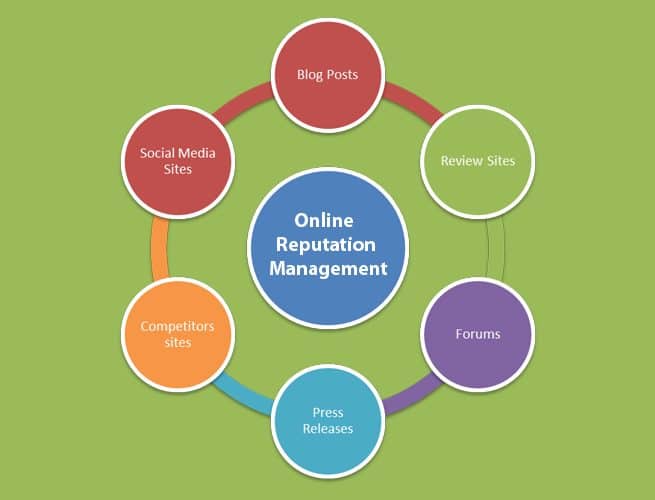When I initially started learning about online reputation marketing, I was excited to see how it could help my brand’s visibility and credibility. I followed all of the best procedures I discovered online, expecting excellent results. However, instead of the expected good feedback, I met a sequence of obstacles that caused me to reconsider my strategy. As I sought assistance from a crisis PR expert, I discovered that some frequent blunders were jeopardizing my efforts. In this article, I’ll discuss five major flaws that may be causing your online reputation marketing to fail, as well as insights to assist you avoid these traps.
What is Online Reputation Marketing?
Online reputation marketing entails actively promoting and managing a positive opinion of your brand or personal image online. In today’s digital world, where a single negative review or comment may spread like wildfire, a solid approach is required.
Key Benefits of Online Reputation Marketing
- Build Trust and Credibility: A positive online reputation fosters trust in future customers or clients. BrightLocal estimates that 87% of consumers would read online reviews for local companies in 2020.
- Attract More Clients: A solid reputation can attract new clients, resulting in business growth.
- Mitigate Negative Content: Proactively managing your online reputation reduces the impact of negative content.
In today’s digital world, having a good online reputation is critical for businesses of all kinds.
According to a BrightLocal survey, 87% of consumers read online reviews about local companies, with 79% believing them as much as personal recommendations. Furthermore, a CareerBuilder poll found that 70% of companies utilize social media to vet prospects during the employment process. These data highlight the necessity of efficiently maintaining your online reputation.
Effective Strategies for Reputation Marketing
What you say and what others say about you both influence your company’s reputation. To effectively navigate this domain, a variety of strategic techniques must be used. These tactics help you manage and improve your online reputation, transforming it into a useful asset for your business’s success.
#1. Active Management of Online Presence
Active control of your online presence is a multifaceted process. It’s not just about leaving a digital footprint; it’s about ensuring that footprint points your company on the proper path. Here’s how you can accomplish it:
1. Regular website updates and optimization
Your website is frequently the first point of contact for potential customers. Keep it up to date with the most recent information, optimize it for search engines, and ensure it reflects the current situation of your organization.
2. Engagement on social media platforms
Your social media presence should include more than just regular posts. It’s about connecting with your audience, engaging in conversations, and demonstrating the human aspect of your company.
#2. Social Media and Content as Reputation Tools
In the realm of online reputation, social media, and content marketing are not just tools; they are your allies. Here’s how you can leverage them:
1. Monitor and respond to online reviews and feedback
Actively monitor what is being posted about your company online. Respond quickly to reviews and feedback, demonstrating that you appreciate consumer input and are devoted to continuous improvement.
2. Consistent, high-quality content
Create and distribute content that connects with your audience and reflects your brand’s values. This content should establish your authority and reputation in your sector, thereby improving your brand’s image.
3. Strategic Social Media Presence
Use social media tools for relationship building as well as outreach. Share compelling stories, engage in important conversations, and use these channels to highlight your brand’s personality and beliefs.
#3. Leveraging Customer Relationships.
Building and leveraging customer relationships is an important technique in reputation marketing. Here is how to efficiently apply this approach:
1. Personalized communication.
Show your customers that they are more than a number. Personalize your communications, whether they are via email marketing, social media interactions, or customer service.
2. Encourage and showcase customer testimonials.
Positive customer testimonials are compelling. Encourage satisfied clients to share their experiences and use their testimonials in your marketing materials.
3. Create a community around your brand
Create a location for your customers to interact with one another and with your business, whether online or offline. This group can be an effective advocate for your company, spreading good remarks.
Implementing these tactics allows you to actively shape your online reputation rather than simply manage it. Remember that in the digital age, your reputation is a living thing that is continuously changing depending on how you interact with your customers and how they view and discuss your brand.
Keep these techniques in mind, and you’ll be well on your way to establishing a solid, positive online reputation that can withstand the digital world’s changing and sometimes difficult landscape.
Five Common Mistakes in Online Reputation Marketing
Maintaining a positive internet presence is critical for online reputation marketing. However, many firms fall into basic pitfalls that might jeopardize their efforts.
Recognizing and avoiding these blunders is critical for establishing and maintaining a credible online presence. Here are five frequent blunders in online reputation marketing and how to avoid them.
#1. Ignoring negative reviews
One of the most common mistakes organizations make is dismissing unfavorable feedback. Pretending they don’t exist won’t make problems go away; rather, it will harm your credibility and consumer trust. Addressing negative feedback in a timely and professional manner demonstrates that you care about your customers’ experiences and are willing to improve.
Example: When I first received a poor review, I disregarded it, believing it would go away.
However, more bad comments followed, and my brand’s reputation deteriorated. A crisis public relations specialist urged me to reply quickly, apologize for any inconvenience, and give alternatives, which helped me recover trust with my clients.
#2. Overly Defensive Responses
While it is critical to address unfavorable feedback, being overly defensive or combative can backfire. Responding with rage or dismissiveness might exacerbate the situation and harm your business image.
Statistics: According to ReviewTrackers, 45% of customers are more likely to patronize a firm that replies to unfavorable feedback. A calm and productive answer can help an unhappy customer become a loyal one.
Example: Initially, I responded defensively to a bad comment, exacerbating the customer’s frustration. Learning to respond with empathy and offer to fix the issue privately had a huge impact on how my brand was perceived.
#3. Lack of Authentic Engagement
Customers value authenticity and real relationships. Automated or generic responses can leave clients feeling unappreciated. Taking the effort to tailor your comments and interact meaningfully might help improve your online reputation.
Example: Instead of responding automatically, I began addressing clients by name, acknowledging their individual needs, and offering tailored answers. This technique increased client happiness and loyalty.
#4. Failing to Monitor Your Online Presence
Not keeping track of your online presence can result in missed opportunities to correct problems before they worsen. Regular monitoring allows you to keep informed about what people are saying about your business and respond quickly.
How To Monitor Your Online Presence:
- Create Google Alerts for your brand name.
- Use social media monitoring tools such as Hootsuite and Sprout Social.
- Visit industry-specific review sites and forums regularly.
Moz discovered that 67% of shoppers are affected by online reviews. Being proactive in monitoring and managing your online reputation can help keep minor concerns from becoming huge crises.
#5. Inconsistent brand messaging
Consistency is essential in online reputation marketing. Inconsistent messages can perplex customers and damage confidence. Make sure your brand’s voice, tone, and values are consistent across all channels and interactions.
Example: I saw that my brand’s messaging varied across social media outlets. By unifying the tone and ensuring that all communications mirrored our core principles, we were able to create a more coherent and trustworthy brand image.
By avoiding these frequent blunders, you can efficiently manage your online reputation, build trust with your target audience, and boost your brand’s credibility.
How Frequently Should I Monitor My Online Reputation?
Regular monitoring is critical. To stay on top of your online presence, set up daily monitoring alerts and do a complete audit every few months.
Can Negative Reviews be Removed?
While it is difficult to eliminate negative reviews, you can manage them by reacting properly and encouraging satisfied customers to submit positive reviews to balance out the negative ones.
Do I Need to Hire a Professional for Online Reputation Marketing?
Hiring a professional can be useful, particularly for organizations with a strong online presence or those in crisis. Professionals have the knowledge and resources to help you manage your reputation efficiently.
How Do I Improve My Online Reputation Quickly?
To boost your online reputation quickly:
- Engage with customers via social media.
- Respond to all reviews, whether positive or bad.
- Create and promote positive content.
- Use SEO to increase the visibility of positive content.
Template for Online Reputation Management
Use our Online Reputation Management Template to track and enhance your digital presence. This template includes a checklist for performing audits, ideas for creating good content, and tools for continuous monitoring.
Online Reputation Management Checklist
Key Takeaways
- Respond to negative criticism quickly and professionally to demonstrate that you care about client happiness.
- Avoid defensive responses and work to resolve conflicts amicably.
- Personalize your interactions and demonstrate genuine concern for your clients.
- Check your brand’s online reputation regularly and respond quickly to any concerns that arise.
- To increase trust and credibility, ensure that your brand messaging is consistent across all channels.
Conclusion
Managing your online reputation is an ongoing activity that needs meticulous attention to detail and a proactive mindset. Avoiding these common blunders and applying successful solutions will help your brand’s credibility and trustworthiness. Have you had any issues with online reputation marketing? What tactics have worked best for you? Please share your experiences and views in the comments section below.
Related Articles
- Strategies for Building an Internal Brand at Your Company: 11 Ultimate Tips
- What is Brand Advertising? How To Build Brand Awareness
- Brand Awareness Ideas: Most Effective Ideas in 2024 (Practical Tips)
- Top 4 Flywheel Marketing Strategies You Need to Know Now
- Integrated Marketing Communication: 5-Step Guide for Integrating Marketing Communication Across Channels





